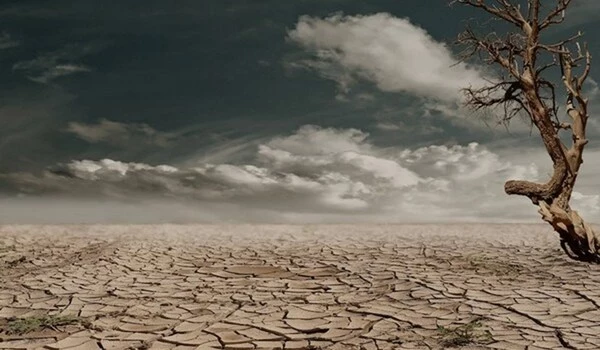Extreme climatic events, such as heat waves, cold snaps, and drought spells, have become more frequent and intense in recent years as a result of global climate change. Plant physiological processes adapting to changes in environmental conditions is a critical component of plant adaptation to climate change.
Scientists discovered that hydrologic conditions that increase the risk of flash drought occur more frequently than current models predict, based on new satellite data analyses. The study also demonstrates that including how plants change soil structures can improve Earth system models.
Plants play an important role in shaping Earth’s weather and climate because they act as physical links between the ground and the sky. Stanford University researchers have revealed how a closer look at the inner workings of plants may be able to improve model predictions of some devastating global disasters.
Flash droughts, which develop quickly and deplete water availability in a matter of weeks, are linked to changes in evapotranspiration, which is the process by which plants move moisture from their roots to the air. Water lost to the atmosphere through evapotranspiration is sometimes considered “lost,” so accurate calculations of this loss can be critical to understanding the impacts on water resources and ecosystems.
We discovered that the model error appears to be explained by the way plants change how particles are arranged in the soil. As a result of these changes to the soil, water flows through the soil differently, changing where and how much water is available for plants to take up and transpire.
Alexandra Konings
Researchers calculated changes in evapotranspiration during droughts that occurred globally from 2003 to 2020 by analyzing satellite data of both precipitation and belowground moisture. The study, published in Nature Climate Change on October 27, reveals more information about evapotranspiration’s role in these catastrophic events.
“When water is already scarce, evapotranspiration will accelerate water loss, making the drought worse in a much shorter time period,” said lead study author Meng Zhao, a postdoctoral researcher in Earth system science at Stanford’s Doerr School of Sustainability. “We face a significant challenge in predicting flash droughts, and underestimating water loss could be a major impediment to that prediction.”
Droughts with a rapid onset and intensification can have a devastating impact on vulnerable communities and food production, as seen in the 2012 Central Great Plains flash drought, which cost more than $30 billion in damages. To improve models, the researchers say they need to include a hidden element in the evapotranspiration process: how plants change the structure and pathways in the soil surrounding their roots.
“We discovered that the model error appears to be explained by the way plants change how particles are arranged in the soil,” said Alexandra Konings, an assistant professor of Earth system science and senior study author. “As a result of these changes to the soil, water flows through the soil differently, changing where and how much water is available for plants to take up and transpire.”

Balancing act
Plants respond to droughts in the same way that people can live with different diets, exercise habits, and sleep hours based on available resources. The tiny pores in leaves called stomata that release water can close, but not all plants close their stomata equally or at the same rate. During drought, drier atmospheres have a greater ability to pull water out of the land through evapotranspiration, causing it to increase; however, if the stomata close sufficiently, it will reduce evapotranspiration relative to non-drought times.
“There’s such a diversity of ways that plants operate that it can be really hard to fully understand, predict, and quantify in the models,” Konings said. “And unfortunately, if this increase in evapotranspiration is happening more often than we realize, it’s intensifying the effect of the drought; there’s even less water in the soil than we realize because more is being lost to the atmosphere.”
Current Earth system models show increases in evapotranspiration, in which stomata are more open, occurring about 25% of the time during droughts. Yet according to the researchers’ new estimate, it occurs about 45% of the time. “This underestimation is particularly large in relatively drier climate and lower biomass regions,” the study authors write.
Researchers combined observations of water storage from the Gravity Recovery and Climate Experiment (GRACE) satellites with precipitation data from the Global Precipitation Climatology Project to calculate evapotranspiration measurements across the globe. Whether a given drought in a particular location leads to high evapotranspiration – and has the potential to develop into a flash drought – depends on a range of factors. The authors found that dry soils are a key control. They further found that current models don’t account for roots’ effect on how water travels through soils. This caused errors in the model simulations of soil dryness and, as a result of that, evapotranspiration.
“We knew that there were problems with the models, but I was really surprised at how off they were,” Konings said. “My personal hope is that other folks in the community who are building different models use the lessons from our paper.”
A transferrable approach
To understand current and future water resources, improved model representations of soil moisture impacts on evapotranspiration, soil structure effects on water transfer, and plant traits are required. While the researchers did not calculate how these new evapotranspiration measurements might affect future climate scenarios, which are expected to bring more frequent and severe droughts, they do believe the findings should be easily transferable to other models. Furthermore, because it is based on satellite data, no on-the-ground resources are required.
“The models clearly underestimate the increase in evapotranspiration during droughts for arid and semi-arid regions,” Zhao said. “That means our understanding of this phenomenon is particularly poor in regions already suffering from environmental injustice issues; I believe our work can help improve the knowledge of these already water-stressed regions.”
















